Instax vs Polaroid: which instant camera is right for you?
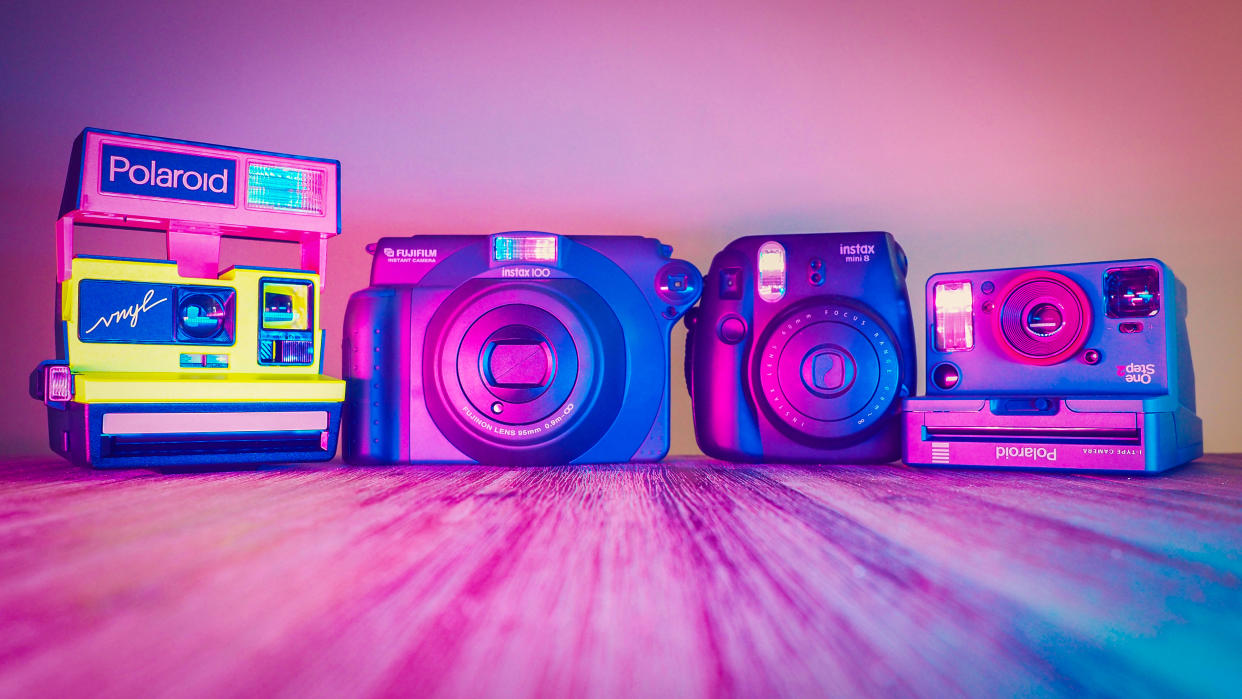
Sooner or later, Instax vs Polaroid becomes a question you have to answer. Because if you don't already own one, it's inevitable that an instant camera (or instant printer) is going to come into your life!
Having been around since 1948, Polaroid is so ubiquitous that it has become synonymous with instant photography. Even so, the Instax vs Polaroid debate is still skewed largely towards the former; introduced by Fujifilm in 1998, ask many people what the best instant camera is and they will likely name an Instax body. And there are a lot of those.
Indeed, the sheer number of different cameras is pretty overwhelming. So, the best place to start when answering the Instax vs Polaroid question is to break down exactly what the options are…
Instax vs Polaroid: Current Instax cameras
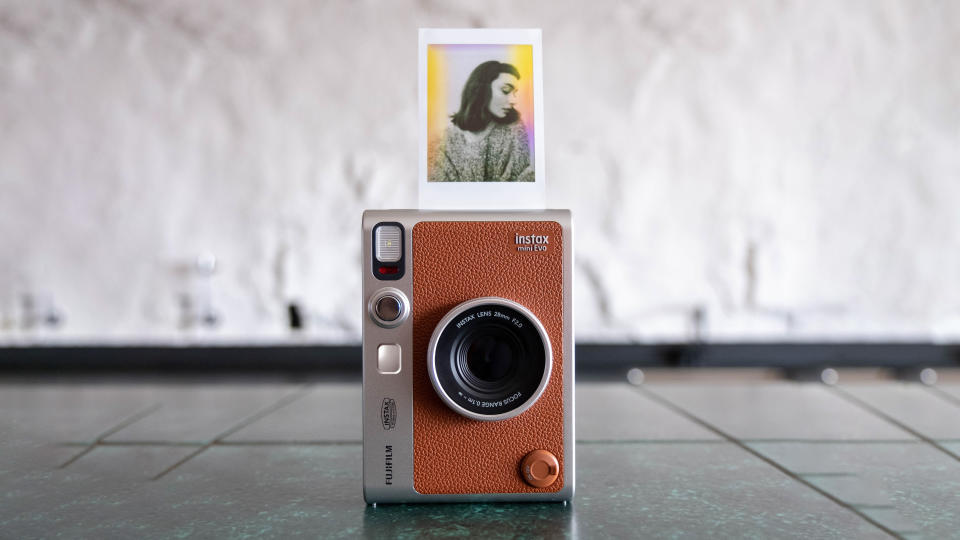
The sheer number of different Instax and Polaroid cameras is pretty overwhelming. So, the best place to start when answering the Instax vs Polaroid question is to break down exactly what the options are.
Let's begin with Instax – these are the current models in the range:
Instax Mini 11
Instax Mini 12
Instax Mini 40
Instax Mini 90
Instax Mini Evo
Instax Mini LiPlay
Instax Square SQ40
Instax Square SQ1
Instax Wide 300
As you can see, there are three different camera formats: Instax Mini (which uses the smallest, rectangular film), Instax Square (using medium-sized square film) and Instax Wide (which uses the largest rectangular film). Otherwise the differences are largely cosmetic, so essentially you're choosing between the smallest cameras that take the smallest photos, mid-sized cameras that take square photos, and a giant camera that takes the biggest photos.
All Instax cameras with the exception of the Mini Evo and Mini LiPlay are analog, and expose photographs instantly onto film using photochemistry. They all feature auto-exposure, for point-and-shoot simplicity, and with the exception of the Mini 90 and Wide 300 all boast a tiny selfie mirror on the front, so you can easily compose your self-portraits.

While all the other analog Instaxes largely share the same features, the Wide 300 features a tripod socket (for taking wide group shots) and a number of flash and exposure compensation options – though it needs a clip-on lens to shoot close-up shots and isn't great for selfies (as its minimum focus distance is 40cm, compared to the 30cm of other Instax models).
The Mini 90, meanwhile, is the most advanced and creative of the bunch, boasting modes such as Bulb Exposure (for effects such as light painting) and Double Exposure (to take two photos in the same exposure, with one superimposed over the other).
Back to the Mini Evo and Mini LiPlay, which are clever hybrid digital instant cameras. They can either expose images instantly (like their analog counterparts), save them digitally (to internal memory or a microSD card), or act as portable printers to "print" existing images from your smartphone onto Instax film. They can also shoot remotely, using the Instax app to fire the shutter from your phone.
Instax vs Polaroid: Current Polaroid cameras
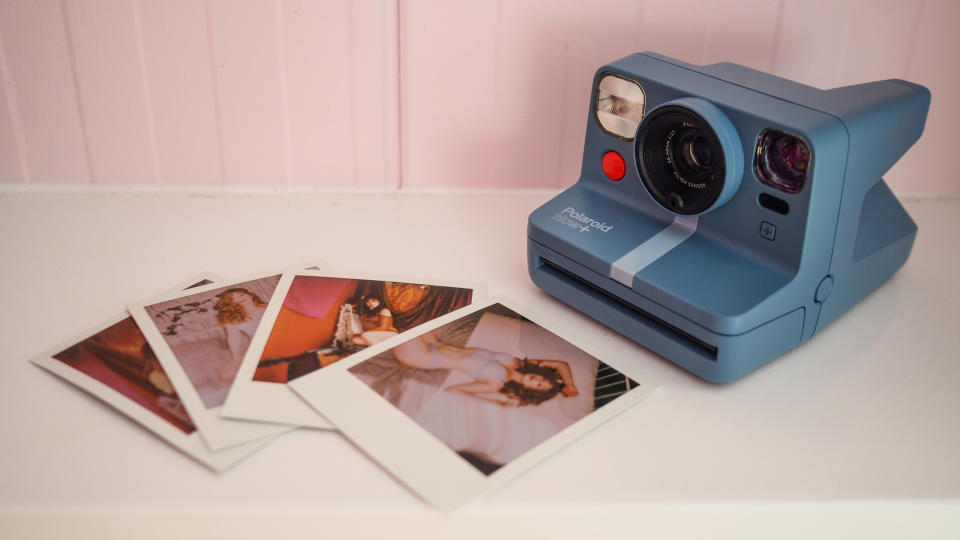
While the Instax range is quite intimidating, Polaroid's current camera offering is much more straightforward – and they are all analog:
Polaroid Go
Polaroid Now
Polaroid Now+
Polaroid 600
The Go is the smallest analog instant camera in the world, and is essentially Polaroid's answer to the Instax Mini – but unlike its rival's tiny rectangular photos, the Go produces tiny square photos.
The Now and Now+ are the latest versions of the iconic Polaroid camera, which produces familiar medium-sized square-shaped photos. These modern cameras have built-in batteries, which means they can take the newer i-Type film as well as traditional 600 film (more on this below).
The Now+ is Polaroid's most creative camera. On top of the features of the standard Now, it also includes lens filters and offers full manual control – so it's more than just a point-and-shoot camera. It even has a bunch of creative tools accessible via a phone app (including light painting and aperture priority) and also has a tripod mount.
Polaroid 600s are not new or, technically, even current cameras. However, since it is so beloved, Polaroid sells refurbished 600 cameras as and when it has stock. So bear in mind that these are vintage cameras brought back to life, and they do not accept the new i-Type film – they only work with 600 film cartridges, which have a battery in them.
Instax vs Polaroid: The film

With so many different formats, regardless of which side of the Instax vs Polaroid debate you fall on, you're inevitably going to ask "What type of instant film do I need?"
The key difference between Instax and Polaroid films is in their photochemistry; Instax shots take around 90 seconds to develop, while Polaroids take up to 15 minutes. The qualities and characteristics of each film is also very different, which we'll cover in the Performance section below.
Instax offers three distinct film types, all of which come in packs of 10 exposures as standard. Instax Mini produces credit card-sized 2.13 x 3.4" rectangular prints, Instax Square delivers medium-sized 2.83 x 3.39" square prints, and Instax Wide produces the largest 4.3 x 3.42" rectangular prints.
All formats offer color and black-and-white film, with Mini and Square also coming in a variety of colored, patterned and limited edition film featuring non-white borders around the prints.

Polaroid offers four kinds of film, all of which comes in standard packs of eight exposures – so you obviously get two less photos per pack than Instax. Polaroid Go film produces tiny 2.623 x 2.122" signature square shots.
"Regular" Polaroid film comes in two varieties: i-Type and 600. Both produce identically-sized 4.233 x 3.483" photos, but the latter comes in film cartridges with a built-in battery. These are required by Polaroid 600s, so these cameras can only use 600 film.
Modern Polaroids like the Now and Now+, however, have their own batteries – so they can accept both i-Type and 600 film. Other than the battery, though, there is no difference between the two film types in terms of quality or performance.
The other two types of film aren't really relevant to this discussion. Polaroid SX-70 film (4.233 x 3.483") is exclusively for SX-70 cameras, which are no longer sold by the company. Polaroid 8x10 film (12.8 x 8.5") is exclusively for large format cameras with an appropriate camera back.
Instax vs Polaroid: Printers
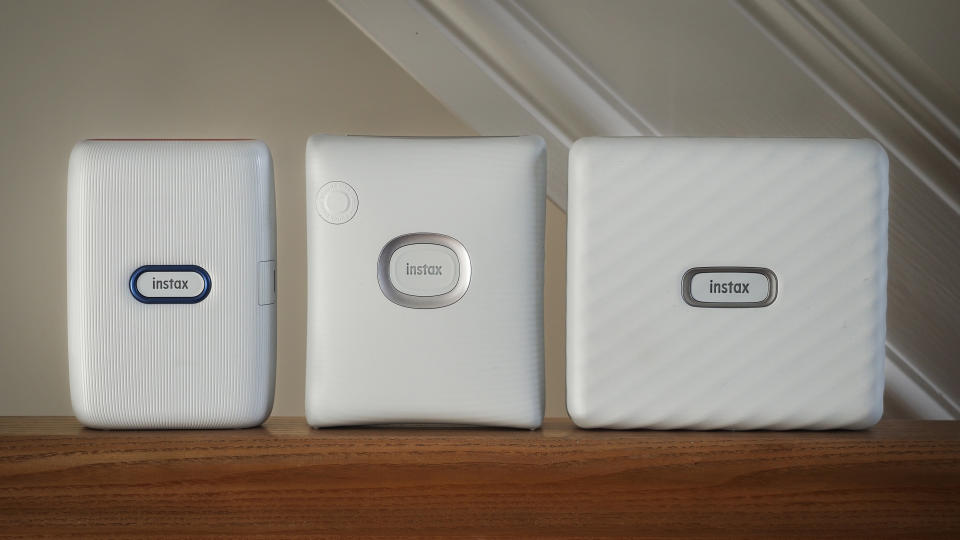
Both Instax and Polaroid offer their own printers using the same instant film used in their instant cameras. However, they each goes about this in very different ways.
Instax has focused on producing some of the best portable printers that use film instead of paper. So, as is the case with its cameras, its Link printers make use of the three Instax formats – the Instax Mini Link 2, Instax Square Link and Instax Link Wide. (As noted above, the Instax Mini LiPlay and Instax Mini Evo both offer this same function.)
All three devices connect wirelessly to your smartphone (or a very limited selection of Fujifilm cameras), enabling you to edit and print your photographs directly onto film. This means that literally any photo (or still from any video) on your phone can be used, whether it's a meme you screenshotted from Twitter or a commercial photo you shot in the studio with an elaborate lighting setup.
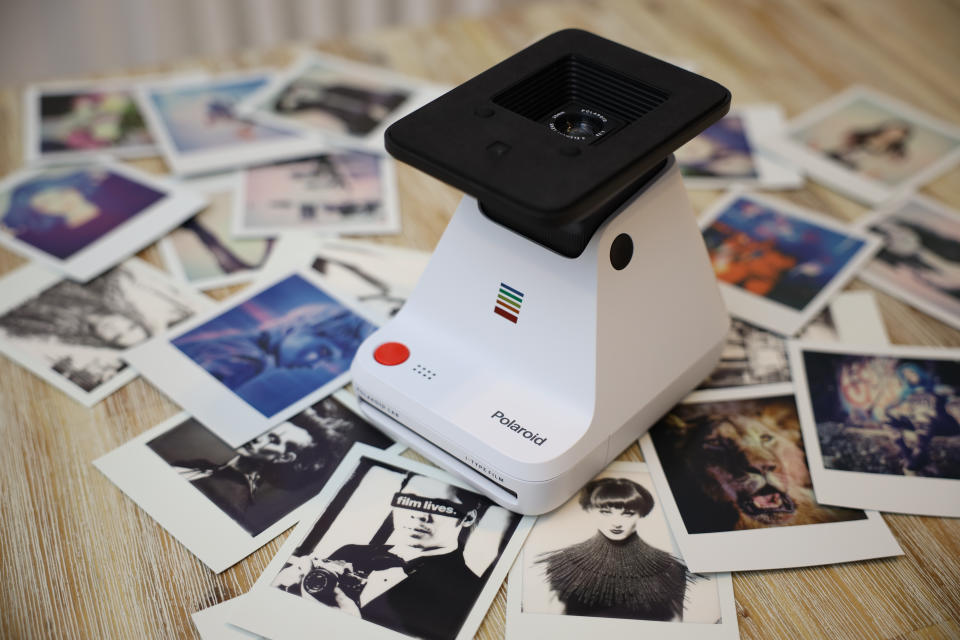
Polaroid's approach is altogether different. Unlike its Instax counterparts, the Polaroid Lab isn't a portable pocket-sized printer; rather, it's a kooky-looking plastic device designed for a desktop – and it looks like it would be more at home in an optician's office.
Look closer and you'll notice that it kinda looks like a Polaroid camera laid on its back with a tray on top of the lens. Which is, in fact, exactly what it is. Where the Instax Link printers receive images digitally, the Polaroid Lab "scans" them by taking a photo of the image on your phone screen. It then exposes a picture of a picture on your phone screen, which is all a bit meta – and can result in fairly ropey image quality.
While the Instax Link printers produce image quality identical to Instax cameras, the Polaroid Lab is much more temperamental (since it relies on the brightness and calibration of your phone screen, which combined with the photochemical process can be pretty hit-and-miss). Check out the full review to see what we mean.
Instax vs Polaroid: Special editions
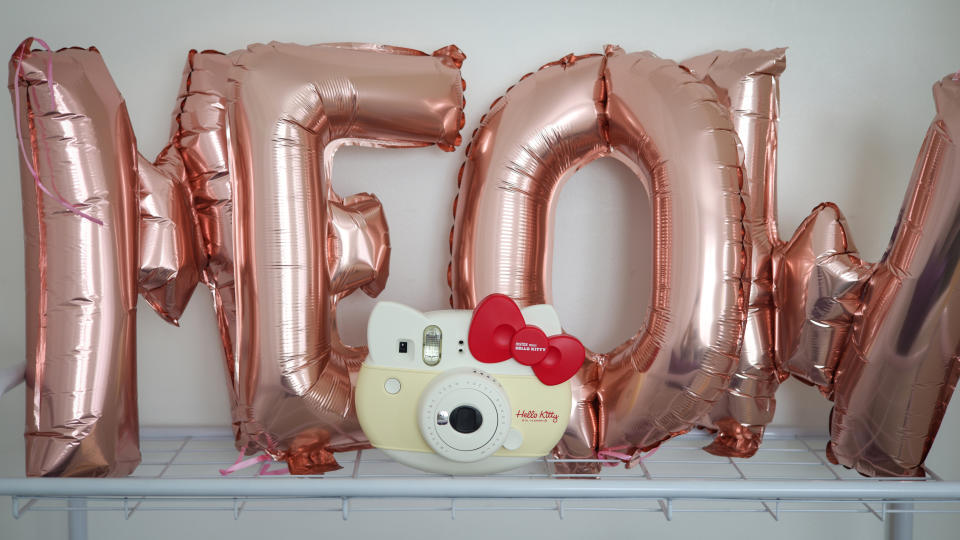
With instant cameras being so affordable, giftable and collectable, Instax and Polaroid both release special editions of their cameras to keep fans constantly interested.
These cameras are typically inspired by pop culture icons. Instax, for instance, struck gold with its Taylor Swift-themed Instax Square SQ6 (which drove camera sales to 900,000 per month!), while Polaroid has collaborated with everyone from Keith Harring to Star Wars, culminating in the Mandalorian Polaroid.
Most of the time, these cameras simply feature alternate colorways, decals or other cosmetic changes. Instax went one further with its Instax Mini Hello Kitty, though, which featured a completely new body in the shape of Hello Kitty's head.
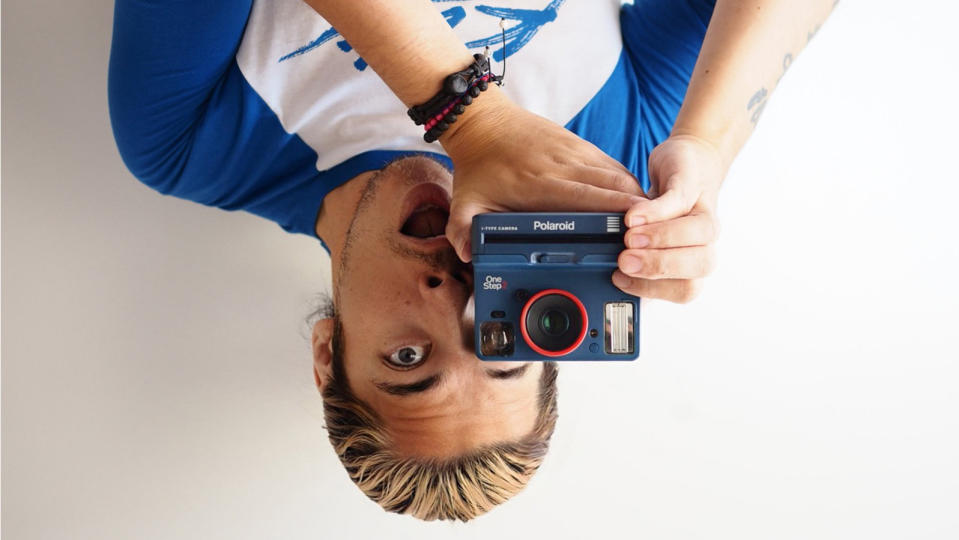
It's not just cameras, though – both brands also produce special and limited edition film as well. Often these new films come in tandem with a new camera, such as The Mandalorian and Keith Haring product range.
Most times, though, the manufacturers put out standalone special edition film. This can range from Polaroid's experimental film stock like the Polaroid Green Duochrome, accidental stock like Polaroid Reclaimed Blue, and celebrity-themed David Bowie Polaroid film.
Instax is more apt to go for popular IP such as Instax Snoopy film, as well as stock based on properties like Pokémon and Disney.
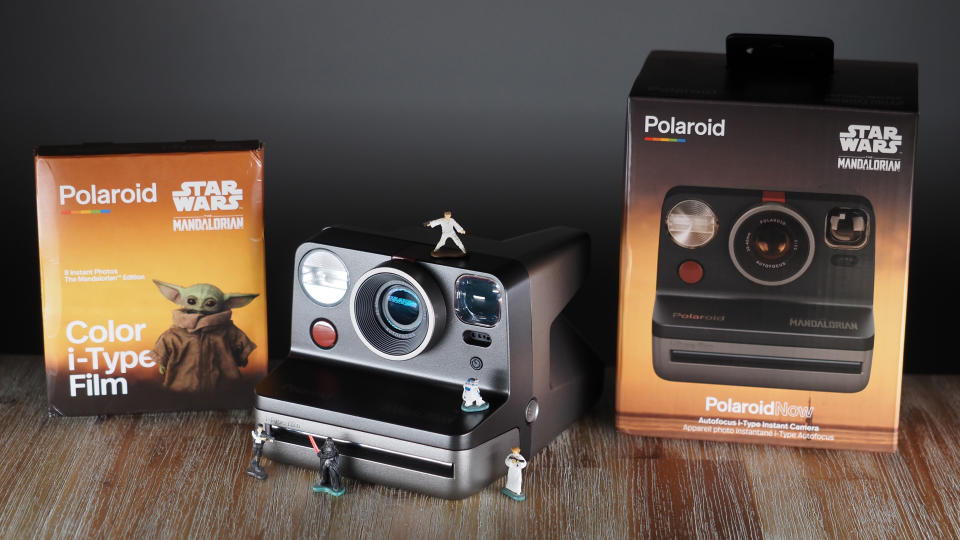
Instax vs Polaroid: Performance
All the cool cameras and crazy film in the word is no good if the pictures are rubbish! So which instant camera has the best image quality? Well, unhelpfully, the answer is… it depends.
If you're looking for conventional image quality – sharpness, contrast, color rendition, exposure – then I would have to say that the Instax family is favorite. This is true across all three formats (Mini, Square and Wide) as it is a product of Instax's photochemistry.
As noted, Instax prints take about 90 seconds to develop – which also means they are the best option if speed is of the essence (these are, after all, instant cameras). In short, if you want pictures that look most like traditional photographs, this is the way to go. Take a look at some samples:

With Polaroid film, you are making a very distinct stylistic choice: these photographs are about character rather than convention when it comes to image quality.
Polaroid cameras and film produce what can only be described as more "vintage-looking" images. Exposures can be more washed out, with smeary oversaturated colors and a dream-like aesthetic. Where Instax film renders more authentic color and hue, Polaroid skews much more magenta.
In addition, because Polaroids take up to 15 minutes to develop (and contrary to what Andre 3000 says, DO NOT shake it!), they are not the format of choice if you want instant gratification – or if you're out shooting with friends or family on a sunny day, if you don't have somewhere dark (like a camera bag) to stash the prints while they expose.
It's also worth noting that the full-size Polaroids (Now and Now+) boast much clearer exposures than the Go indoors, thanks to the larger and more powerful flash. They also handle overexposure much better when shooting outdoors. Here are some samples:

Instax vs Polaroid: Verdict
If you're looking for the industry standard, it's Instax – which is actually the most successful brand across the entire camera industry, not just instant photography. It's the most affordable, the most versatile (when it comes to offering three different size formats), the most instant, and offers the most conventional image quality.
However, Polaroid has the hip factor. It offers the coolest collaborations and cameras, the experimental film stocks are ridiculously neat, the Now+ has the most all-round advanced features, and the characteristics are the most authentically "vintage" for that retro look on your photographs.
Ultimately, it all comes down to that look – and whether you want a crunchy contrasty vibe (Instax) or a more psychedelic throwback feel (Polaroid). At the end of the day, both formats are fantastic – but they're both about the feeling, so go with the one that calls out to you!

